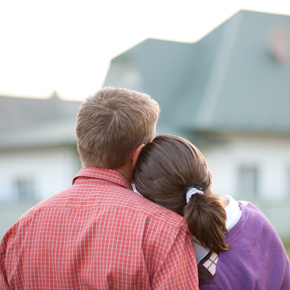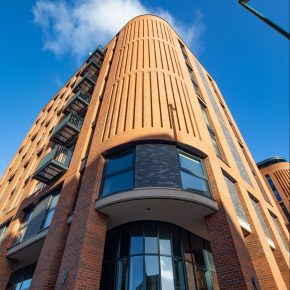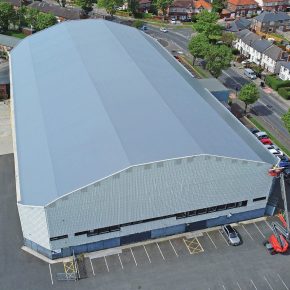
Adapting a home for the disabled or elderly
When someone is living with a disability, or simply have mobility issues after reaching old age, even the simple things in everyday life can be a real challenge.
This even includes just getting around your home, which is why it is so important to get the adaption of a home for an elderly or disabled person right.
Widen doors and hallways
When you think about home adaptations for the disabled the first thing that springs to mind might be hand rails, low beds and bath tubs, or perhaps access ramps.
However, one of the most important adaptations that needs to be considered is simply making sure that the hallways and doors are wide enough to accommodate a wheelchair.
Lighting and acoustics
 For people who are partially sighted or have hearing problems, getting the lighting and acoustics right in each room can make a huge difference.
For people who are partially sighted or have hearing problems, getting the lighting and acoustics right in each room can make a huge difference.
Use brighter, natural spectrum lighting as much as possible, and implement accent lights to guide those people who are sight impaired to help them get around the home easier. Identify the darker areas around your home and brighten them to help avoid trips and falls.
Another important factor that you might not consider is the acoustics of a home.
As we get older our hearing deteriorates, and a home that has been designed or adapted with acoustics in mind can make a big difference to quality of life. You can hire specialist acoustic engineers to provide you with advice on how to best reduce the ambient noise that can drown out the things you want to hear.
Platform lifts
If you’re adapting a home that has more than one floor – or even just has a large step that is too high for a ramp – a platform lift is the perfect solution.
The mobility and home lift specialists Gartec & Gartec Home offer a wide range of platform lifts designed and built by Artico, some of which are capable of travelling up to 13 metres and incorporating six stops.
The importance of platform lifts for properties with multiple floors cannot be overstated in terms of helping the elderly and disabled to regain independence in their own home.
Flooring
If you’re adapting a home for someone who’s in a wheelchair, one of your top priorities should be replacing the carpets. They can make it much harder to get around the home than compared with laminate or solid wood flooring as it takes a lot more energy and strength to do so.
What’s more, hardwood flooring can also add value to the property, so it should really be seen as an investment rather than an expenditure.
There are a lot of things that need to be thought about when adapting a home for the elderly or disabled, but by focusing on these important features first you can make a big difference and help them to reclaim an independent life at home.
Latest news

23rd April 2024
Trio of Senior products used in new Nottingham residential scheme
Solutions from Senior Architectural Systems have helped complete The Barnum – a new residential development on Nottingham’s Queen’s Road.
Posted in Aluminium Products, Articles, Building Industry News, Building Products & Structures, Building Systems, Case Studies, Curtain Walling, Doors, Glass, Glazing, Posts, Restoration & Refurbishment, Retrofit & Renovation, Walls, Windows
22nd April 2024
New EJOT role will develop strategic support for UK flat roofing sector
EJOT UK has taken a major step in the expansion of its support for the flat roofing market by appointing one of its most experienced building envelope fastening specialists as its first sector-dedicated business development manager.
Posted in Articles, Building Industry News, Building Products & Structures, Building Systems, Innovations & New Products, Posts, Recruitment, Restoration & Refurbishment, Retrofit & Renovation, Roofs
22nd April 2024
Access2 Wins ADSA-Sponsored Award at AI Specification Awards
Access2 clinched the ADSA-sponsored Product Design and Innovation Award (Electronic) at the AI Specification Awards 2024 on Thursday.
Posted in Access Control & Door Entry Systems, Architectural Ironmongery, Articles, Awards, Building Associations & Institutes, Building Industry Events, Building Industry News, Building Products & Structures, Building Services, Doors, Facility Management & Building Services, Information Technology, Innovations & New Products, Retrofit & Renovation, Security and Fire Protection, Video of the Week
19th April 2024
ASSA ABLOY: Access solutions can impact sustainability performance across the full life-cycle of a building
Embedding sustainability within any organisation requires a broad, strategic perspective. Scrutiny should include the physical infrastructure itself: According to the IEA, buildings consume around 30% of global energy*. ASSA ABLOY has more…
Posted in Access Control & Door Entry Systems, Architectural Ironmongery, Articles, Building Industry News, Building Products & Structures, Building Regulations & Accreditations, Building Services, Case Studies, Doors, Facility Management & Building Services, Information Technology, Research & Materials Testing, Retrofit & Renovation, Security and Fire Protection, Sustainability & Energy Efficiency, Video of the Week
 Sign up:
Sign up: